The U.S. Bureau of Labor Statistics released its February 2025 Inflation report on Wednesday, March 12th, 2025. The report showed that Annual Inflation was down from 3.0% in January to 2.8% in February.
Calculated to two digits, it was 3.00% in January, and 2.82% in February.
On a non-seasonally adjusted basis, monthly inflation was 0.65% in January 2025, and 0.44% in February. This was down from 0.62% in February 2024.
Inflation Prediction:
As you can see from our MIP projection from last month, February’s Annual inflation at 2.82% is just below our predicted Extreme Low of 2.88%.
See this month’s MIP prediction
Annual Inflation… 2.82% in February 2025
- Annual Inflation fell from 3.00% to 2.82%
- CPI Index rose from 317.671 to 319.082
- Monthly Inflation for February 2025 was 0.44% down from February 2024’s 0.62%
- Next release April 10th 2025
| Jan | Feb | Mar | Apr | May | June | July | Aug | Sep | Oct | Nov | Dec | |
| 2025 | 3.00% | 2.82% | NA | NA | NA | NA | NA | NA | NA | NA | NA | NA |
| 2024 | 3.09% | 3.15% | 3.48% | 3.36% | 3.27% | 2.97% | 2.89% | 2.53% | 2.44% | 2.60% | 2.75% | 2.89% |
| 2023 | 6.41% | 6.04% | 4.98% | 4.93% | 4.05% | 2.97% | 3.18% | 3.67% | 3.70% | 3.24% | 3.14% | 3.35% |
BLS Commentary:
The BLS Commissioner reported:
“The Consumer Price Index for All Urban Consumers (CPI-U) increased 0.2 percent on a seasonally adjusted basis in February, after rising 0.5 percent in January, the U.S. Bureau of Labor Statistics reported today. Over the last 12 months, the all items index increased 2.8 percent before seasonal adjustment…
The all items index rose 2.8 percent for the 12 months ending February, after rising 3.0 percent over the 12 months ending January. The all items less food and energy index rose 3.1 percent over the last 12 months. The energy index decreased 0.2 percent for the 12 months ending February. The food index increased 2.6 percent over the last year.”
Looking at table A below we can see that on an annual basis energy and commodities are still down but services are up.
The biggest gainers on an annual basis were Services like shelter, transportation services, and Medical care.
Individual Components:
Looking at table A below we can see that on an annual basis most of energy is still down but on a monthly basis it is up in December, January and February.
The biggest gainers on an annual basis were Services like Food away from home, Utility Gas, Shelter, Transportation, and Medical Care Services.
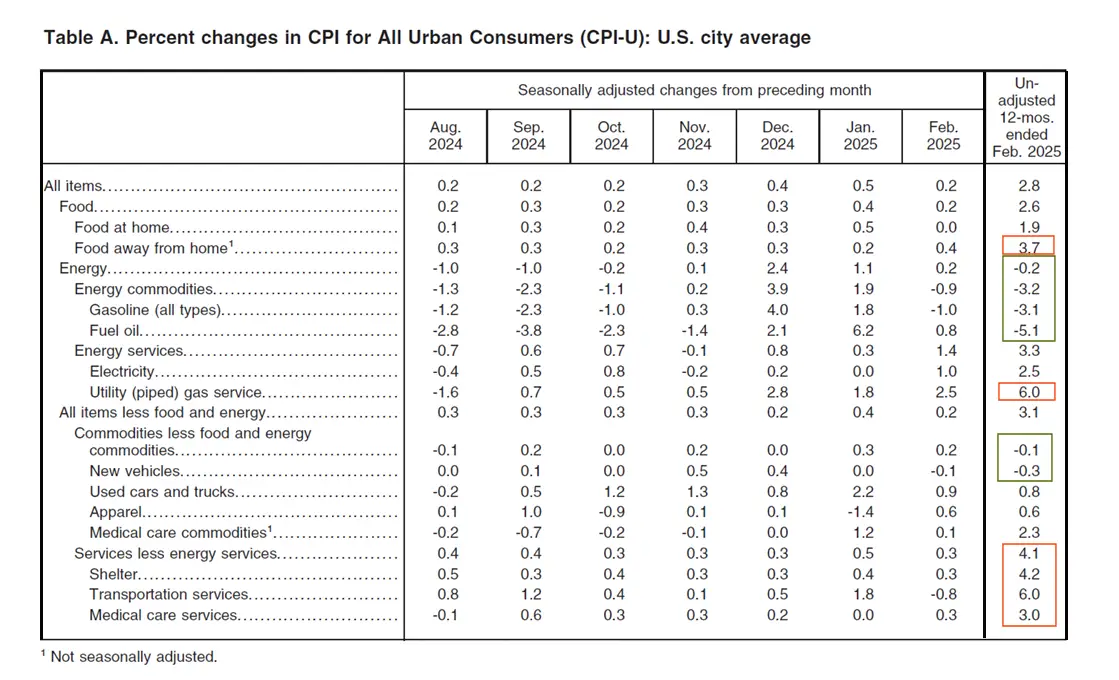 Although these “Seasonally Adjusted” numbers are slightly different than those typically presented by the BLS, the following chart from the Federal Reserve shows the gap between inflation with and without Food and Energy. So, we can see how much food and energy are contributing toward overall inflation.
Although these “Seasonally Adjusted” numbers are slightly different than those typically presented by the BLS, the following chart from the Federal Reserve shows the gap between inflation with and without Food and Energy. So, we can see how much food and energy are contributing toward overall inflation.
Without food and energy, inflation would be 3.14%. But due to the downward pressure of Energy total inflation according to the FED is 2.81%.
Source: St. Louis FED
FED Monetary Policy
February 2025 Summary:
- FED Assets are Falling
- M2 Money supply is rising
- FED Funds Rates Remains at 4.33%
FED Assets and M2 Money Supply
Looking at the M2 money supply we get a slightly different picture. Here we see a steady growth of the money supply from 2009 through 2020 (#1), then a sharp spike as we saw with FED assets (#2), and then a slightly less sharp incline (#3) (but longer duration for QE 5) taking M2 to 22 Trillion dollars in 2022. From 2022 to 2023 (#4) we see the decline we would expect due to the reduction of FED assets…
BUT… rather than continuing to decline in 2023 and 2024 as FED assets do, M2 returns to the same slope of increase as from 2012-2020 (#5), despite FED assets declining. This could be the reason for the rebound in the stock market, beginning at about the same time as this uptick in M2. Not surprisingly, this is just in time to boost the market for the November election. Typically, this helps the incumbent party. This time it wasn’t enough to tip the scales in favor of Harris. See comments on NASDAQ ROC about election year stock market performance.
FED Funds Rate
The FED held its Funds rate steady in January and February 2025 at 4.33%.
More info about FED Monetary Policy and Inflation
Inflation Chart
Monthly Inflation Compared to Previous Years:
The monthly inflation rate for February 2025 was 0.44%.
In the chart below, we can see how the UNADJUSTED monthly inflation compares from 2020 through 2025. In January, monthly inflation was higher than in 2024, but in February, it was lower.
Not Seasonally Adjusted Monthly Inflation Rates
Note: January 2022’s 0.84% was the highest January since 1990. June was the highest June since 1941 (although the first quarter of 1980 had some higher rates). Typically, the first quarter has the highest monthly inflation and the 4th quarter is the lowest (even negative).
| Jan | Feb | Mar | Apr | May | Jun | Jul | Aug | Sep | Oct | Nov | Dec | |
| 2016 | 0.17% | 0.08% | 0.43% | 0.47% | 0.41% | 0.33% | (0.16%) | 0.09% | 0.24% | 0.12% | (0.16%) | 0.03% |
| 2017 | 0.58% | 0.31% | 0.08% | 0.30% | 0.09% | 0.09% | (0.07%) | 0.30% | 0.53% | (0.06%) | 0.002% | (0.06%) |
| 2018 | 0.54% | 0.45% | 0.23% | 0.40% | 0.42% | 0.16% | 0.01% | 0.06% | 0.12% | 0.18% | (0.33%) | (0.32%) |
| 2019 | 0.19% | 0.42% | 0.56% | 0.53% | 0.21% | 0.02% | 0.17% | (0.01%) | 0.08% | 0.23% | (0.05%) | (0.09%) |
| 2020 | 0.39% | 0.27% | (0.22%) | (0.67%) | 0.002% | 0.55% | 0.51% | 0.32% | 0.14% | 0.04% | (0.06%) | 0.09% |
| 2021 | 0.43% | 0.55% | 0.71% | 0.82% | 0.80% | 0.93% | 0.48% | 0.21% | 0.27% | 0.83% | 0.49% | 0.31% |
| 2022 | 0.84% | 0.91% | 1.34% | 0.56% | 1.10% | 1.37% | (0.01%) | (0.04%) | 0.22% | 0.41% | (0.10%) | (0.34%) |
| 2023 | 0.80% | 0.56% | 0.33% | 0.51% | 0.25% | 0.32% | 0.19% | 0.44% | 0.25% | (0.04%) | (0.20%) | (0.10%) |
| 2024 | 0.54% | 0.62% | 0.65% | 0.39% | 0.17% | 0.03% | 0.12% | 0.08% | 0.16% | 0.12% | (0.05%) | 0.04% |
| 2025 | 0.65% | 0.44% |
See: Monthly Inflation Rate for more information and a complete table of Unadjusted Monthly Rates.
Misery Index
Current Misery Index:
Unemployment 4.10% + Inflation 2.82% = 6.92%
This month, unemployment is up, but Inflation is down, so the misery index is down from 7.00%.
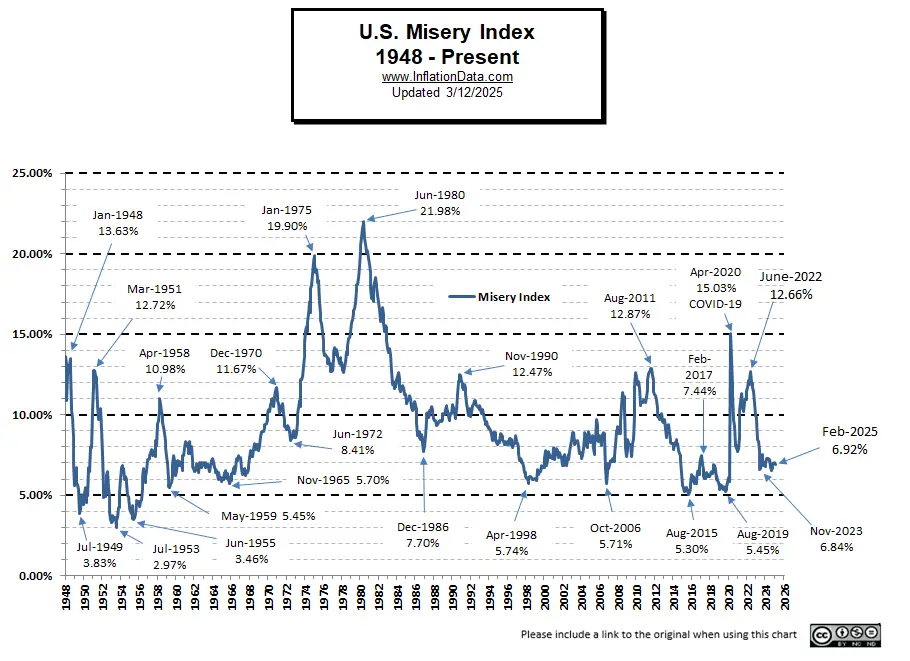 [Read More on the Misery Index…]
[Read More on the Misery Index…]
Rate of Change (ROC) Charts
The NYSE ROC issued a Sell Signal in November.
The NASDAQ ROC issued a Sell signal in December.
Bitcoin generated a Sell signal in February.
But the Fear and Greed Index is firmly in Fear territory. According to Warren Buffet, we should buy when others are fearful.
Ethereum also issued a Sell signal in February.
For more information, see NYSE Rate of Change (ROC) , NASDAQ ROC Chart, and Crypto ROC .
You Might Also Like:
From InflationData.com
- Which is Worse, Inflation or Deflation?
- Which Debts To Pay Off First When Inflation Hits
- Would DOGE Dividend Checks Stoke Inflation?
- BLS January 2025 Inflation Report
- The Correlation Between Job Market Turnover and Inflation
- BLS releases its December 2024 Inflation report
- How Inflation Destroys Civilization
- November 2024 Inflation Up Slightly
From Financial Trend Forecaster
- NYSE ROC
- NASDAQ ROC
- Crypto ROC
- The Truth About why Nixon Replaced the Gold Standard with Fiat
- Media Censorship-Sacrificing Truth
- Income Inequality Misconceptions in the U.S.
- February Market Update- NYSE, NASDAQ and Crypto
- The Real Effects of Cutting Government Waste
- How Can Trump Drive Oil Prices Down AND Fill the SPR?
From UnemploymentData.com.
From Elliott Wave University
- Stock Prices are Out of This World
- Five Benefits of Using the Elliott Wave Principle to Make Decisions
- Invest Like Warren Buffet
- Gold Prices: The calm before a record run
- This Trend Will Likely Soon Rock the U.S. Financial System
From OptioMoney
- Tips for Mastering the Art of Bargaining and Negotiation After Moving to a New Country
- Consumer Culture Contrasting Spending Habits in the US and Europe
- Financial Considerations When Moving to Florida
- Splitting Your Golden Years:
- Home-Buying Guide for Newlyweds
From Your Family Finances
- Question: I’m brand new to credit cards.
- Maintaining Value in a High-Inflation World
- What Homeowners Need to Know about Florida’s Property Insurance Crisis
- How to Get Money Interest Free
- How to Financially Prepare for Hurricane Season

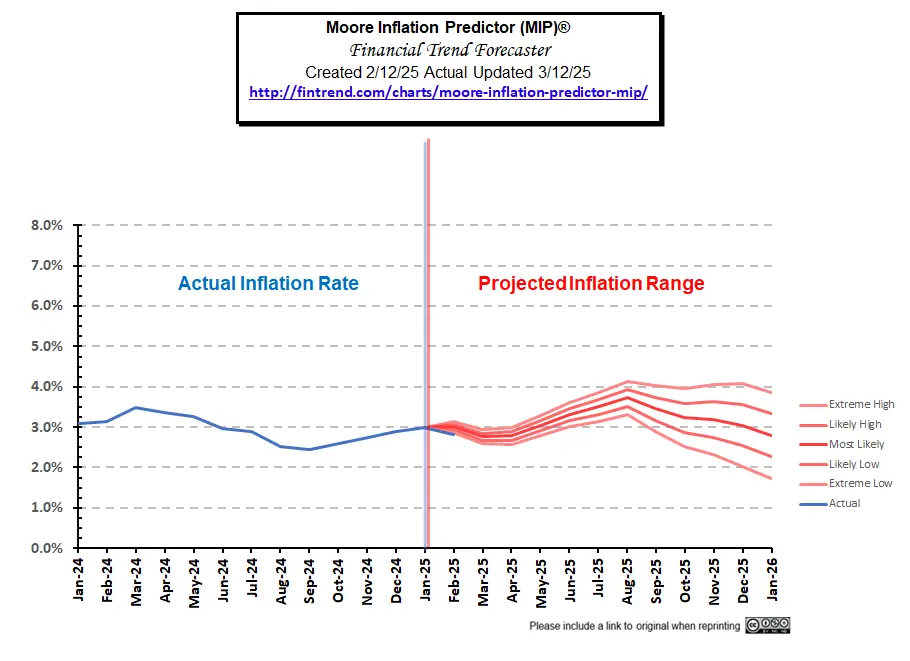
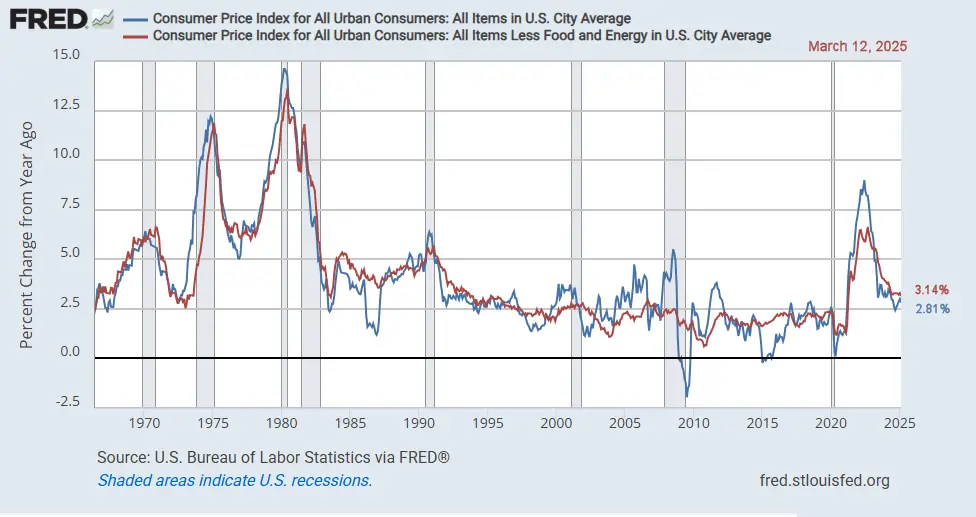
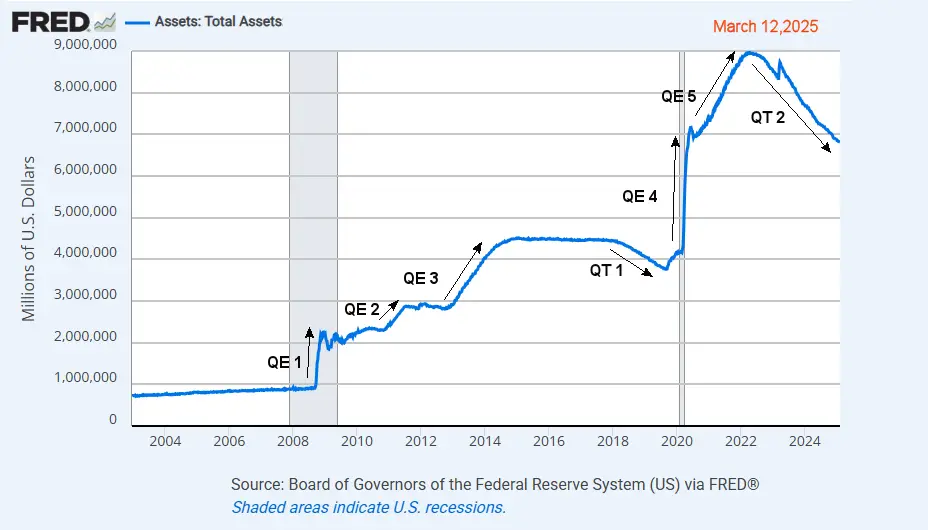
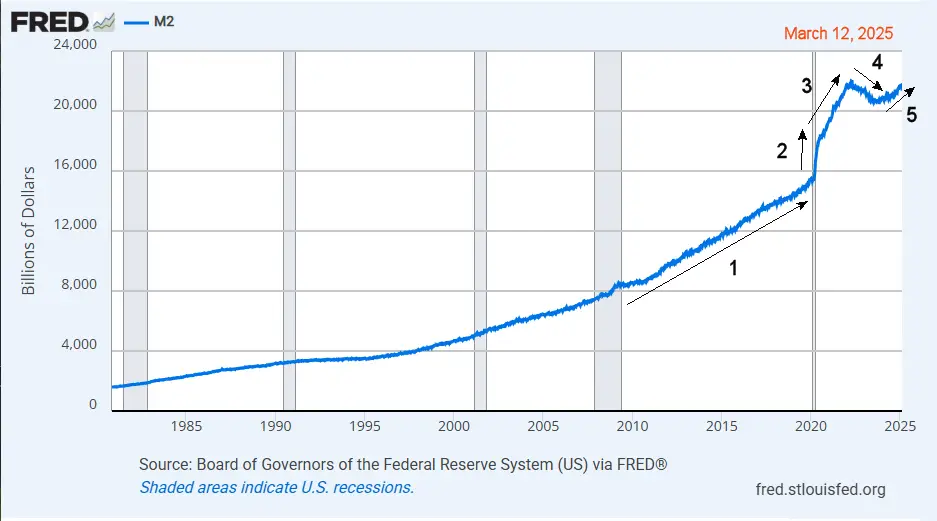
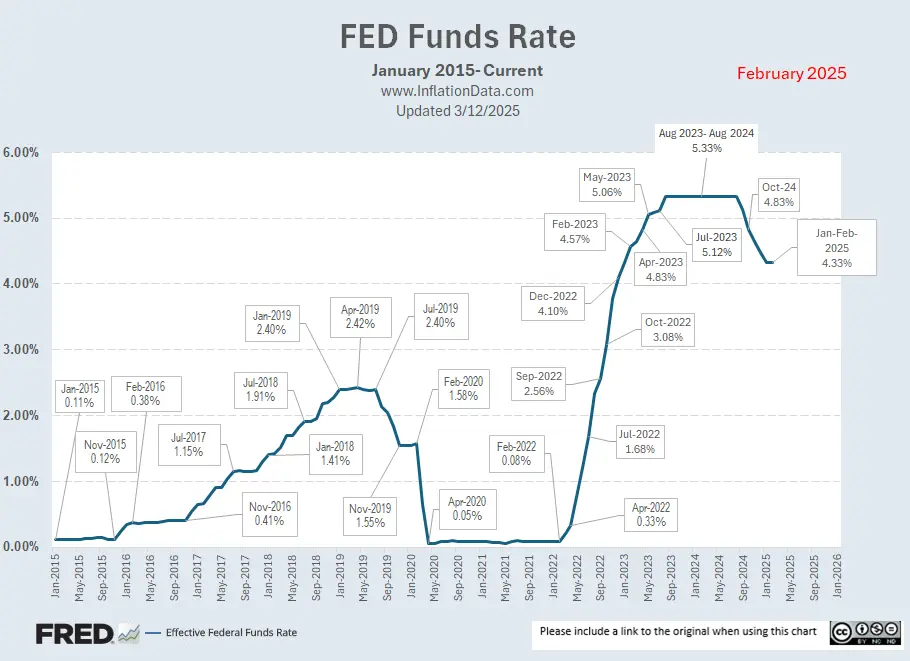
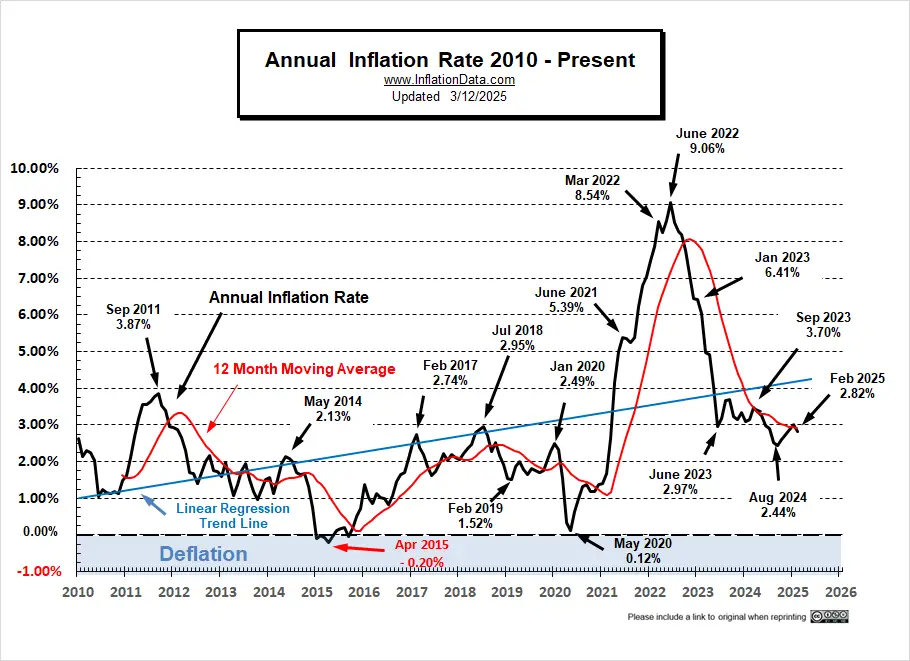
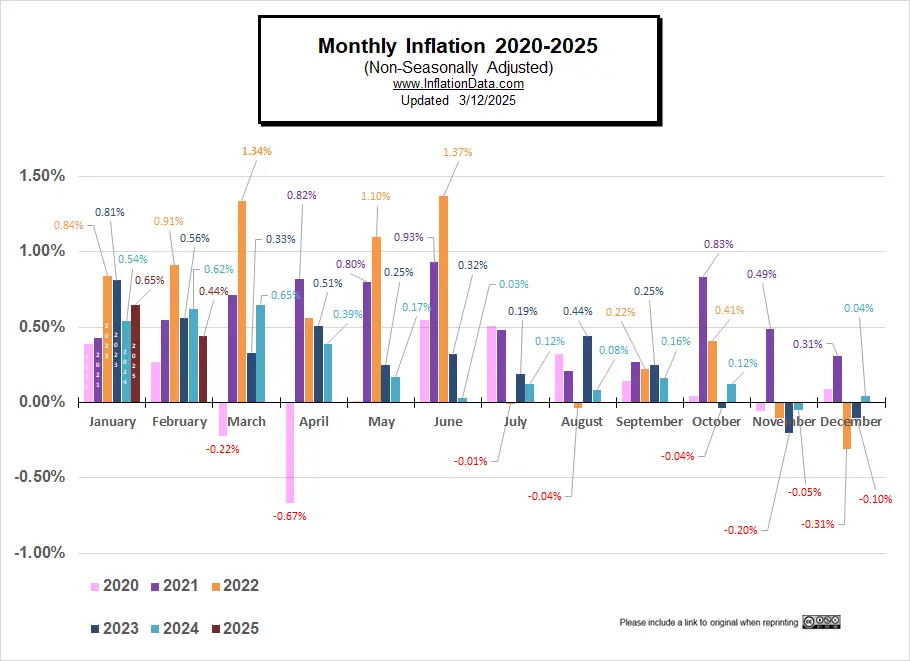
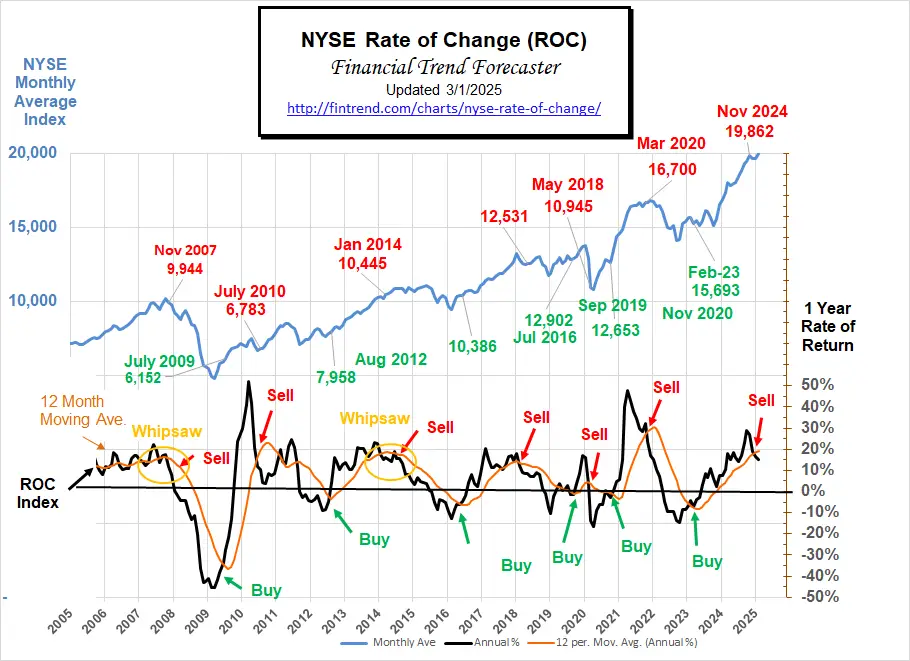
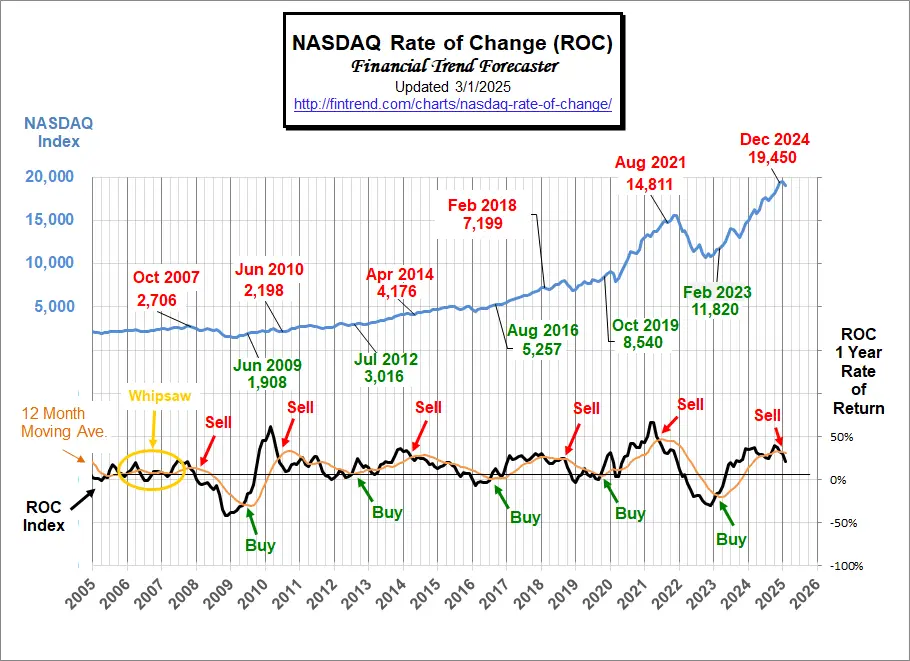
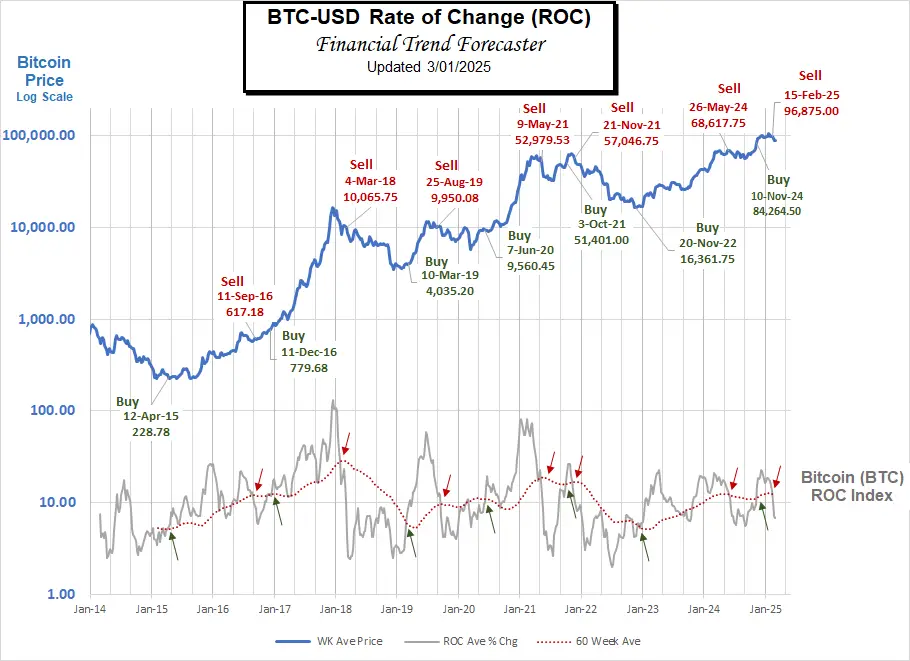
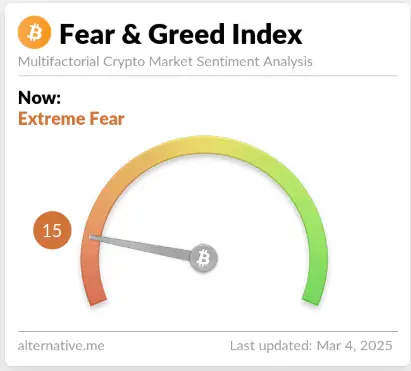
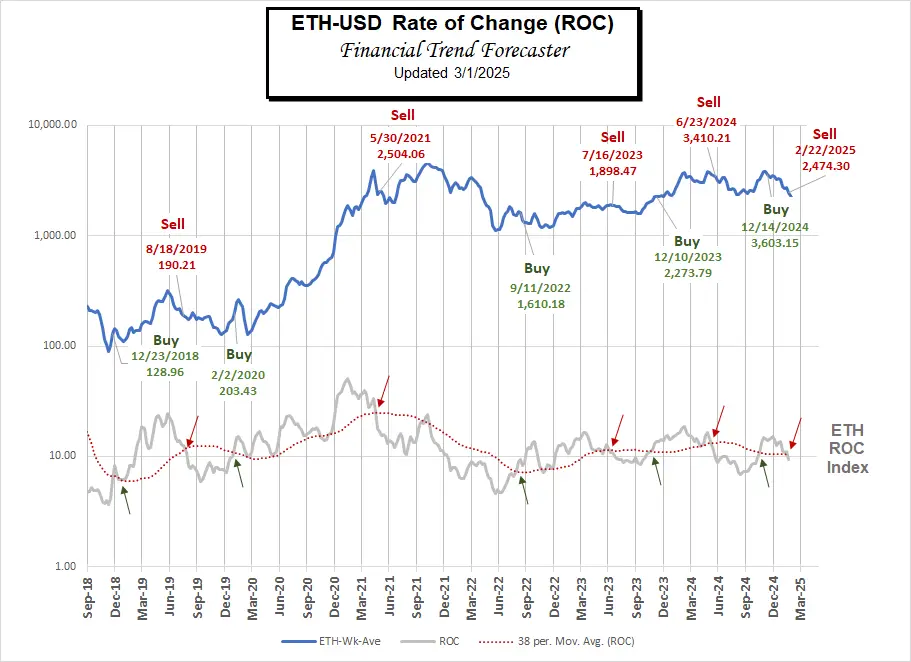
Leave a Reply